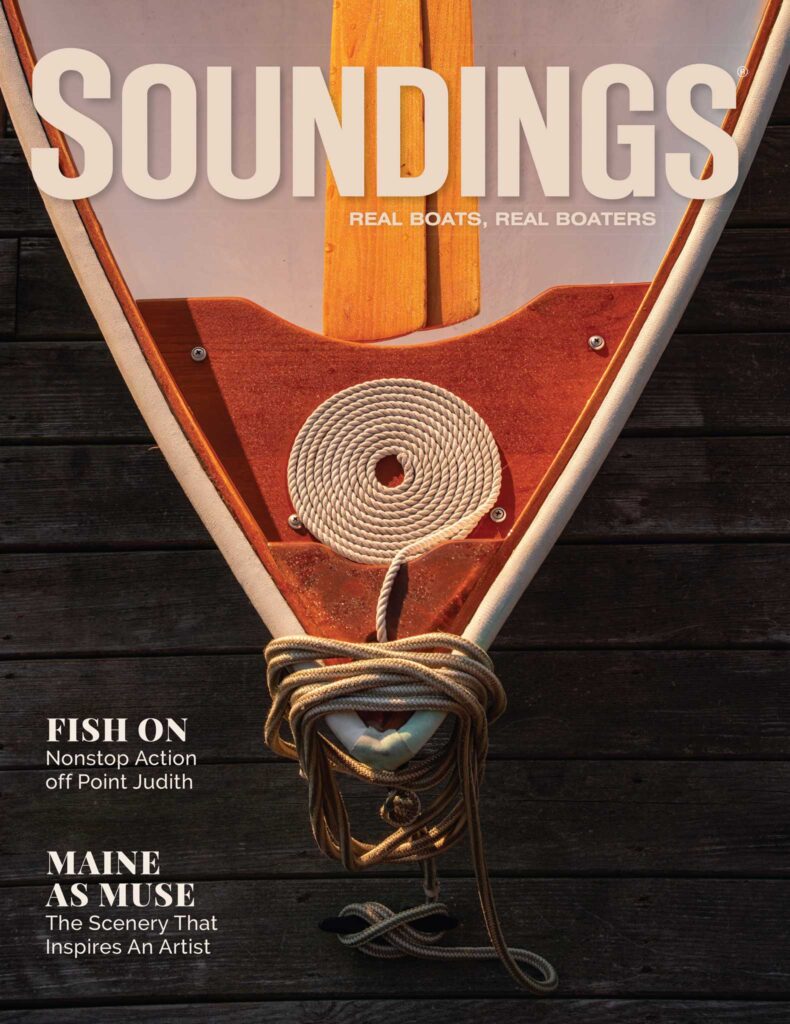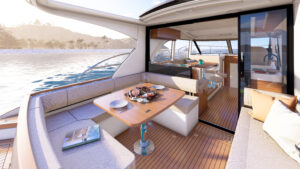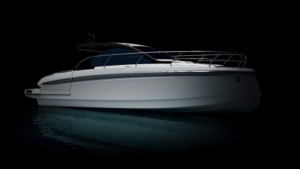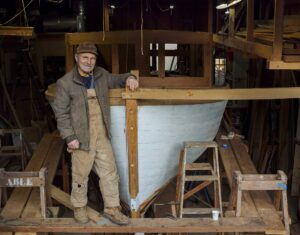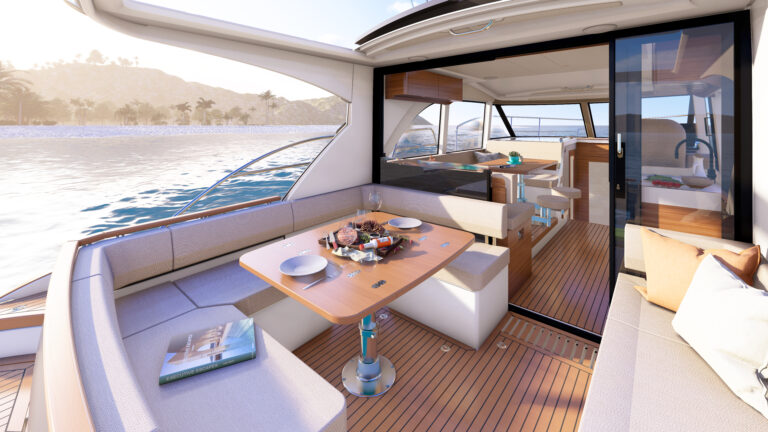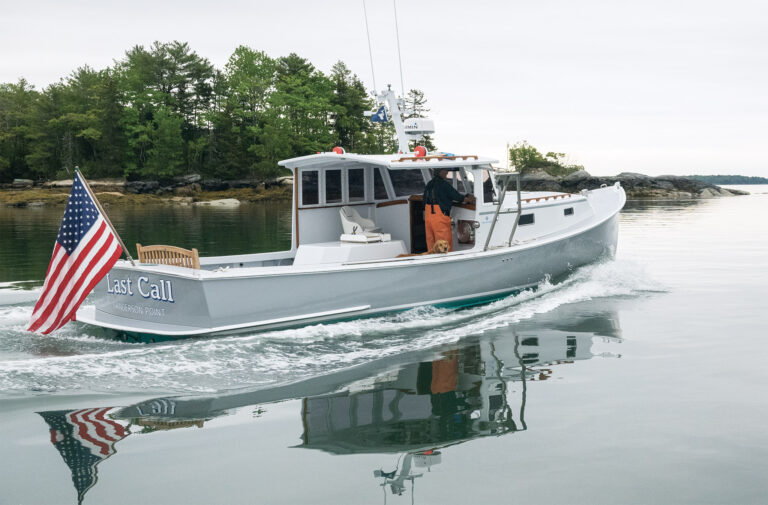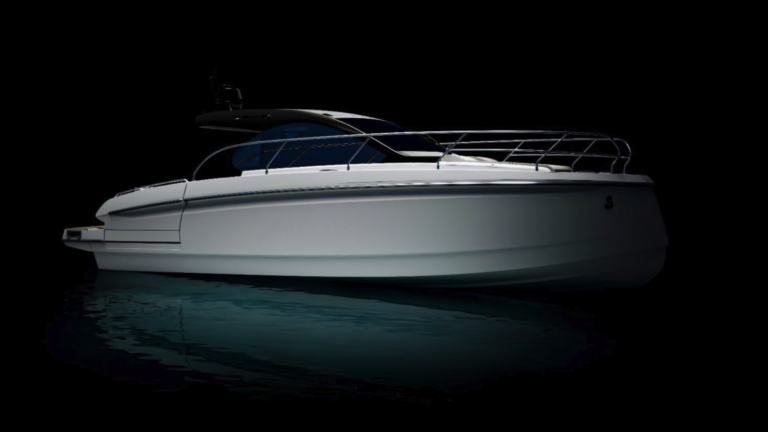Whenever I chat with Gregor Tarjan, I’m caught in a time warp: I’m back in my formative years in Vienna, Austria. I moved to the world’s waltzing capital from the Alpine valleys to attend university half a lifetime ago, but he was born and raised there.

When we talk, we end up ribbing each other about the subtle nuances of the accents that betray our origins, which are only 200 miles but also a world apart. So it was with more than a passing interest that I learned about Tarjan’s bid to start a cruising catamaran business on New York’s Long Island, a former hotbed of boatbuilding, instead of going offshore to China, South Africa or Vietnam. Building domestically puts him in the company of a select few, including Gunboat in North Carolina, Maine Cat in Maine and Gemini Catamarans in Maryland, which outsources building to Hunter Marine in Florida. (Gunboat still maintains some production in Xiamen, China.)
Given the volatile state of the economy and the dynamics of globalization, that’s a steep hill to climb. But Tarjan’s not alone. He partnered with Marc Anassis, a Greek veteran of the boatbuilding trade who has done and seen it all, witnessing booms and busts, sometimes a bit closer than he might have liked. But here they are, Gregor and Marc, the Austrian and the Greek, dreamers both, joining a small band of brothers who still believe that quality, competitive pricing and “Made in the USA” don’t have to be mutually exclusive.
Dick Vermeulen, whose Maine Cat celebrates its 20th anniversary this year, is a competitor and an interested observer. “There’s always room for good boats,” he says. “And we need more people in this business who employ U.S. boatbuilders. I wish them luck.”
Different tacks, same passion
To understand how our two protagonists got to this point, it helps to sketch their individual histories. As a kid in Vienna, Tarjan mucked around in hard-chined Pirate dinghies to learn the basics of sailing on a side arm of the Danube River that’s notorious for unpredictable wind shifts and topless sunbathers. I’m not sure he was sufficiently distraught about the public display of partial nudity to warrant a move to the United States after he graduated from high school with an international baccalaureate. But Tarjan, who is of Armenian descent, also has a U.S. passport because his mother was born in New York. That simplified things a great deal when he decided to pursue a career in the boating business after getting a degree in art history from the State University of New York in Stony Brook.
He enrolled in a yacht design course at The Landing School in Maine and found himself working at Derecktor in Mamaroneck, N.Y., assisting Dave Pedrick, who led the design team in Dennis Conner’s successful America’s Cup campaign of 1987 that brought back the Auld Mug. Tarjan got his 100-ton captain’s license and sailed on all kinds of boats, near and far, but was partial to catamarans because he likes going long and fast, without keel and heel. “And that’s precisely what catamarans do best,” he says.
Tarjan, who has relatives in Marseille and is fluent in French, also sells French cats by Fountaine Pajot and Outremer through his company Aeroyacht (www.aeroyacht.com) in Setauket Harbor, N.Y. On the side, however, he harbored dreams of building something that was informed by his own ideas of how modern cruising catamarans should look and sail. He had partnered with Luca Bassani of Wally Yachts in Italy on a 120-foot cat, which was nominated for a superyacht award but never got built. “Then I heard about this 70-foot catamaran right in my back yard, here on Long Island, so I went to check it out,” he says.

That was in Patchogue, N.Y., on the South Shore of Long Island, all of a 30-minute drive away. There, he met Anassis, who initially envisioned this 70-footer as a charter boat in the Caribbean. But construction slowed to a crawl because of the cash-flow problems of one of the stakeholders. “We met to discuss the 70-footer,” Anassis says, “but soon we were talking about building a smaller boat.”
That’s how it sometimes goes: You aim at one thing but hit something altogether different. It didn’t surprise Anassis, who knows the boat business like the lint in his pocket. He started when he was a student of naval architecture in Athens, before emigrating to Canada on the cusp of the boatbuilding boom in the early 1970s. “I worked at C&C and also for Eric Bruckmann, probably the best builder I’ve ever known,” he says.
Then he opened his own shop, Bay Craft Manufacturing, which specialized in small boats. But he still felt the tug of Greece, so he sold out and returned to Athens, where he got right back into old habits. “At first I built three Carter 39s and put them in charter,” he says. “Then I added two Phantom 36s and a Beneteau.”
Later, he hit a home run with the Atlantic 55, a “3:1 cruiser” — 15 meters on the waterline with a 5-meter beam and four guest cabins with en-suite heads. “Soon I had inquiries from Germany, Austria and the Netherlands,” he says. “Business was tremendous.”
He launched Atlantic Yachts in 1984, which ballooned to 150 employees who built the 55 and other models. Eight years and 850 boats later, Anassis got tired and sold the company. However, it wasn’t the ending he’d hoped for but the beginning of a nightmare that wiped him out financially and left him with more horror stories about the Greek economy than Michael Lewis could fit into a book. At any rate, Anassis had his fill and moved back to Canada and then to Long Island in 1995, where he soon returned to old habits. Again.
Modern style with broad appeal
In Tarjan, Anassis found a fellow enthusiast who was ready to move a mountain to make his dreams come true. The two started doodling. Tarjan wanted a boat that fit the profile of his clientele and the creative license to turn his vision into a product. It ended up being a 42-foot cruising cat, at the lower end of the midsize segment.
Anassis, a trained naval architect, owns Alpha 1 Composites but also does business as Alpha Yachts on the premises of South Shore Boat Works in Patchogue, where the boat is being built. He and Tarjan jointly financed the operation but split the design process — Anassis ran the numbers while Tarjan pondered styling.
The challenge was to come up with a boat for everyone that didn’t look like a boat for everyone. Tarjan tried to account for the different uses — cruiser, daysailer, family boat, charter boat, a diving or fishing platform. It also had to tickle expert sailors and novices alike.
He took his cues from contemporary cat design, which embraces wave-piercing bows that reduce pitching, increase performance and produce a seakindly motion — in theory, at least. The hulls have hard chines for strength, extra space and fashionable looks. The driver sits to port behind a nifty fold-down windshield, high up on the aft bulkhead of the saloon, which has large trapezoidal windows with opening vents. A forward lounge area offers a spot to hang out in the breeze while sailing and to toast the sunset in privacy in the crowded harbors of the Med while moored stern-to.
There will be two choices for interiors — one with four cabins and heads for charter use and an owner’s version with a large suite to port and two cabins to starboard. The appointment is modern yet simple, with an eye on weight reduction. “We wanted a boat that performs under a broad range of circumstances,” Tarjan says.
Price considerations dictated that it could not be built from carbon fiber. Instead, they opted for a hand-laid fiberglass sandwich laminate with vinylester resin, a Divinycell foam core and a Kevlar matrix that reinforces high-load areas. The rig is pretty standard and carries 1,073 square feet of canvas and has an integrated carbon bowsprit for the gennaker. Performance hounds can order a rotating carbon stick and daggerboards.
The cart before the horse
“I started from the back,” Tarjan laughs. “I talked to the potential customers first and went from there.”
He didn’t want to price himself out of the market, he says, and homed in on the range between $400,000 and $500,000, the “comfort zone” of many existing clients. If it holds, it’s also a good price point for a small building operation with a dozen employees, who are mostly from Long Island.
“We’re not just hiring local builders,” Anassis says. “We also train them because when jobs get sent overseas, skilled labor also disappears.”
And it’s been going well, says Tarjan, who says a half-dozen boats are sold and that a contract for No. 7 is awaiting the customer’s signature. He raves about the diverse group of people, who sent a six-figure check for the down payment, which is put into escrow “for the build of their boat, not anything else.” To him, that’s proof that the Alpha 42 resonates with different users in different venues.
The first to take delivery this summer is a couple from Hamburg, Germany, who’ll take their boat to the Caribbean. And when they go for their first sail, presumably on Great South Bay, the two dreamers — Tarjan, the Austrian, and Anassis, the Greek — will have accomplished their mission. They’ve also fed a lifelong passion of drawing, building and selling boats to clients who like their vision. And this time it’s even better because their vision comes with the label “Made in the USA.”
Dieter Loibner is sailing editor for Soundings.
April 2013 issue

